About Cracks
Home inspectors will encounter cracks in almost every part of a home made of materials brittle enough to crack. Cracking is pretty much always a response to stress. Put simply; stress is relieved by cracking.
Cracks in slabs, foundations, and walls have different characteristics depending on the type and direction of the forces causing the stress. A common source of stress is soil movement, either heaving or settling, and this is often differential movement, meaning that soil under adjacent parts of a home are moving in different directions, or that soil under one part of the home is stable while under an adjacent part it's moving.
Although the standards of practice do not require home inspectors to identify the cause of any cracking, understanding the forces that cause cracking may help inspectors to better understand where to look for problems that might not otherwise be obvious.
SOIL MOVEMENT
The following illustrations are from "Field Guide to Crack Patterns in Buildings" by Harry S. Audell (out of print)
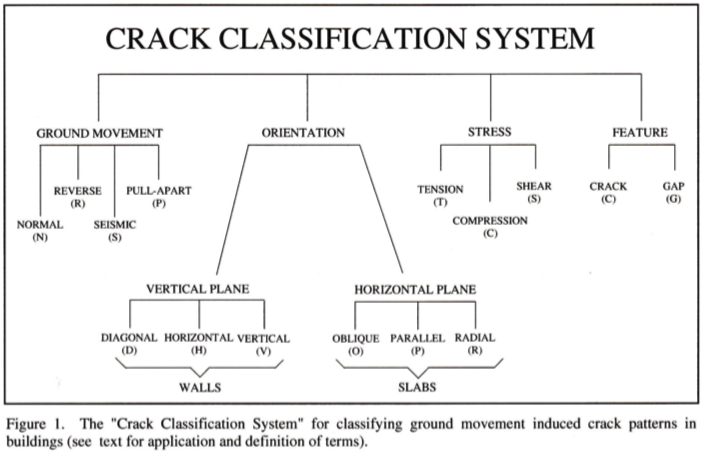
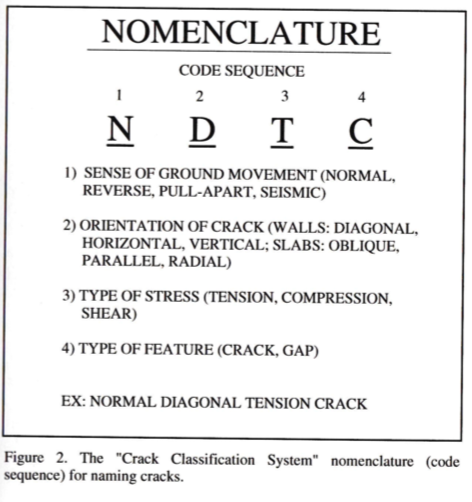
Note: ABL means "as-built line of reference".
Cracks are described as having ascending (wider at the bottom)or descending (wider at the top) closures.
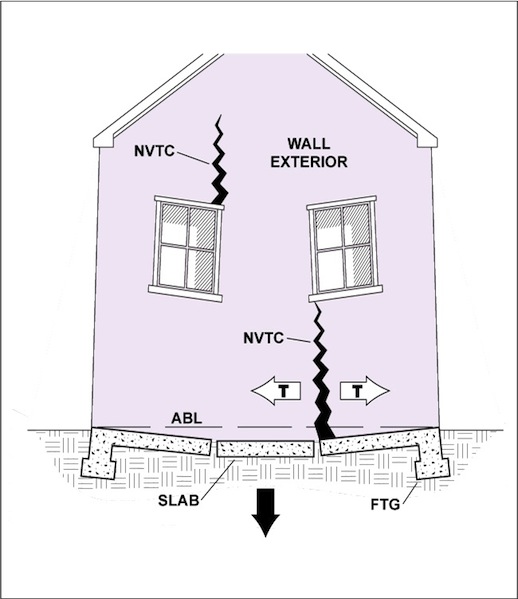
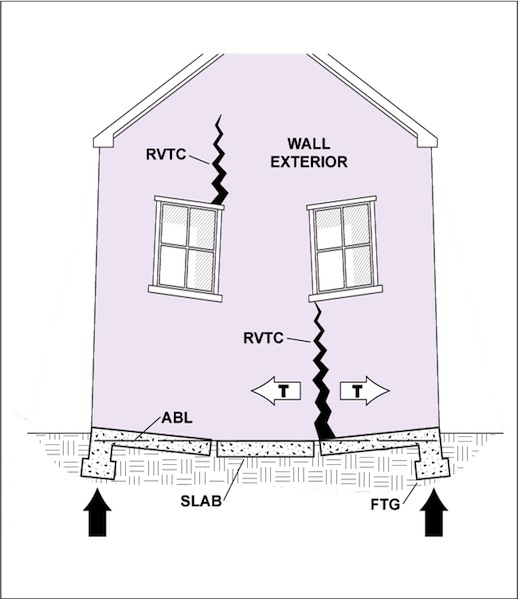
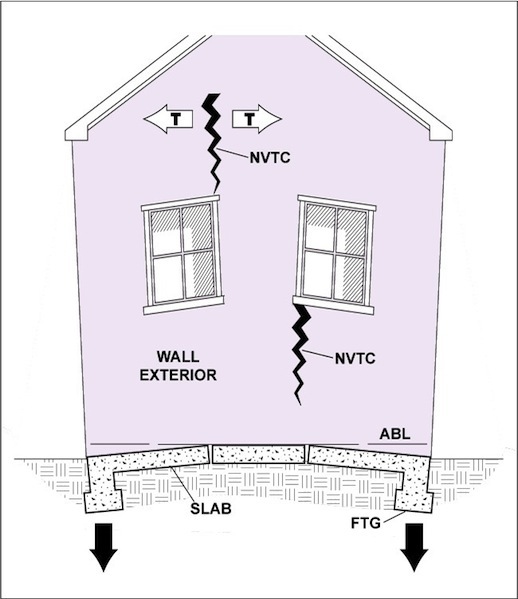
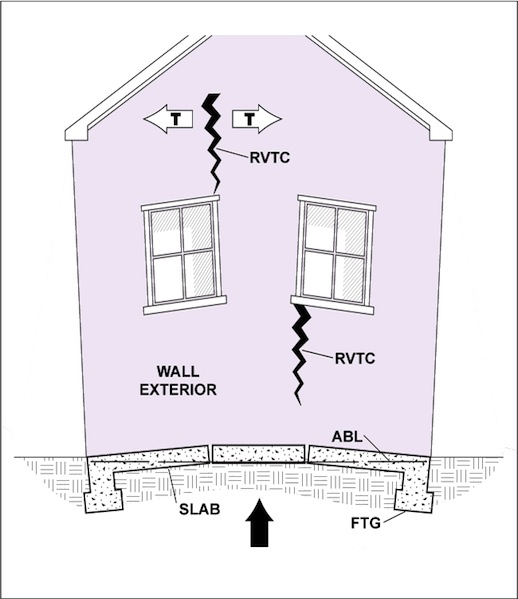
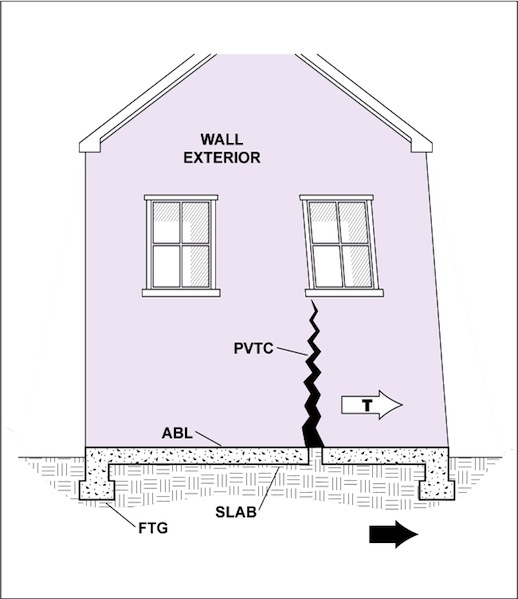
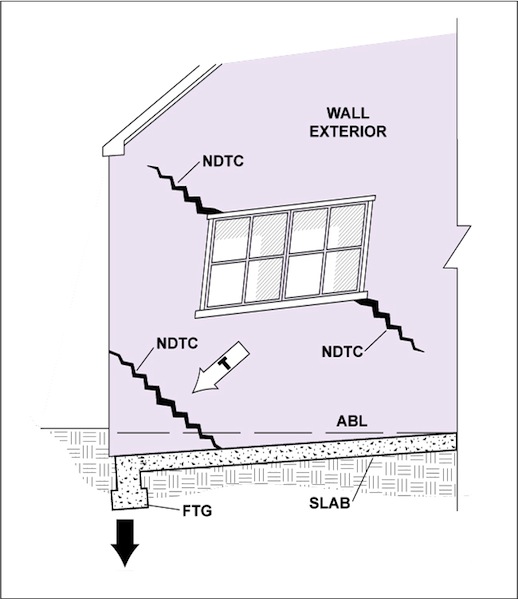
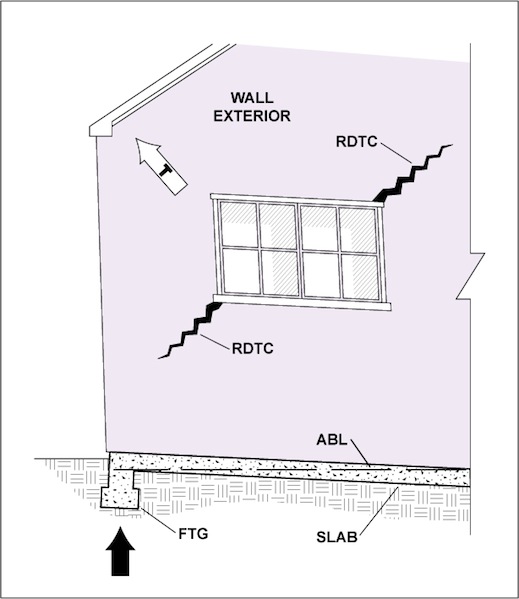
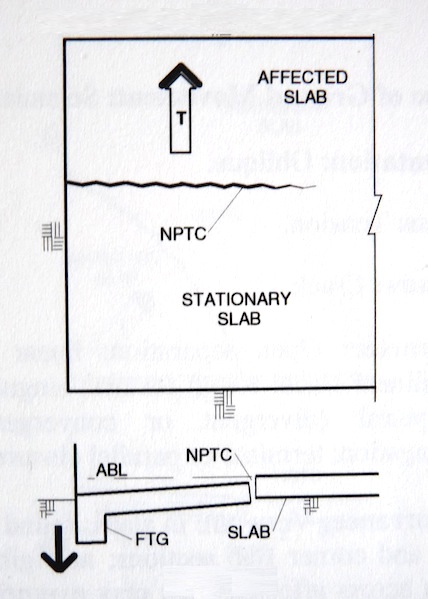
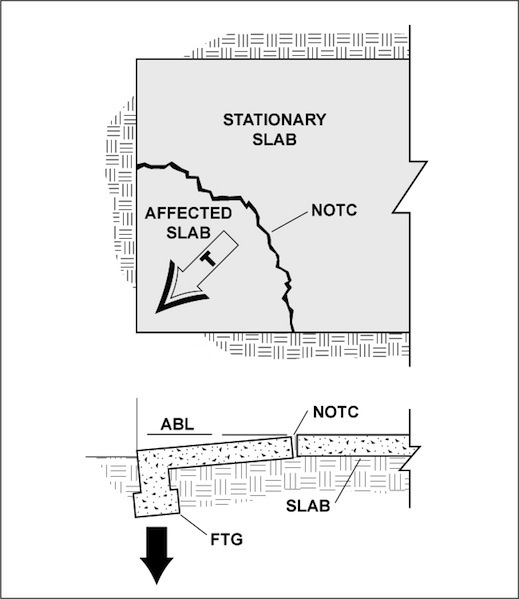
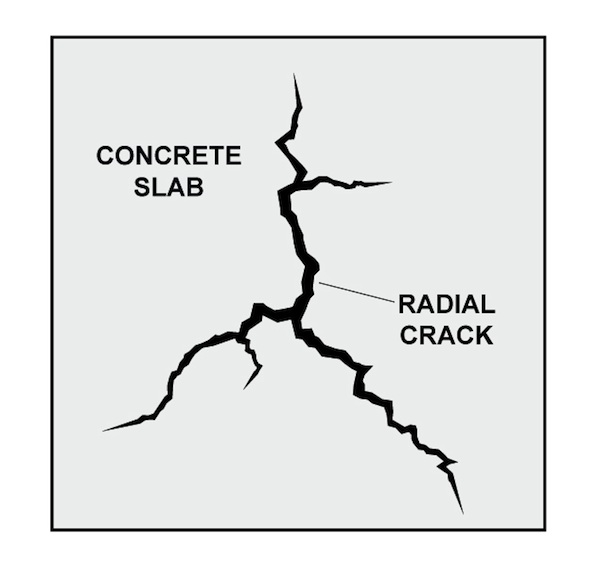
RESISTANCE to SHRINKAGE
Shrinkage cracks are typical of materials that are placed in a soft, plastic state and then harden, like concrete. We'll use a concrete slab as an example. Once the concrete slab is poured, chemical changes take place and it begins to harden and water begins to evaporate from its surface. As water evaporates from the pores, the concrete shrinks.
Stress develops from the fact that water evaporates more quickly from the slab surface (exposed to sun and wind) than from the underlying portion of the slab.
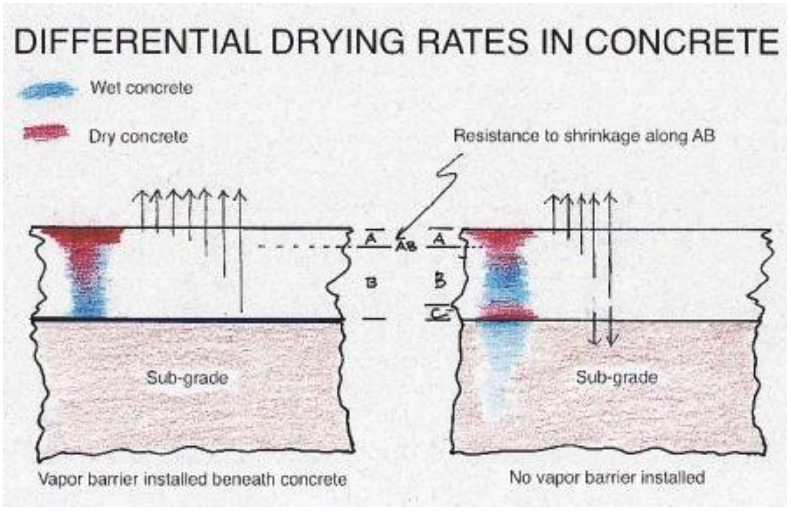
A concrete slab may dry in two directions if no vapor barrier is installed
If the concrete at the surface is shrinking faster than the underlying concrete, stresses develop in the concrete surface that are relieved by cracking. We call them "shrinkage cracks".
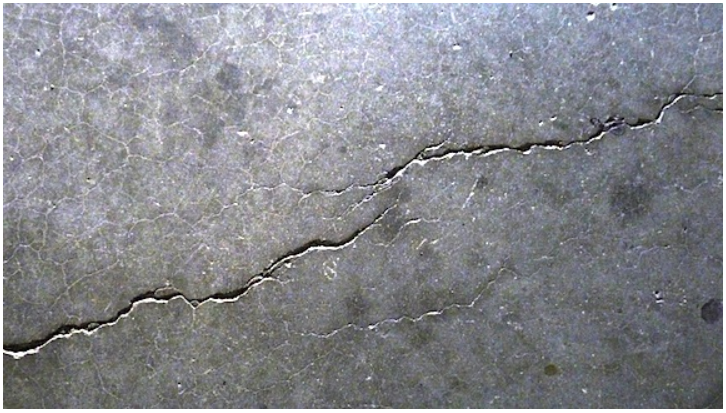
Shrinkage cracks are often not continuous
For a more detailed look at forces that affect concrete, see my article Visual Inspection of Concrete.
COMPRESSI0N CRACKING
Compression cracking typically results from failure to load the roof to allow framing to settle before installing interior and exterior wall covering materials, or from changing to a heavier roof-covering material from the original. Compression cracking often happens along seams, so, vertical and horizontal instead of diagonal, which is typically caused by soil/foundation movement.
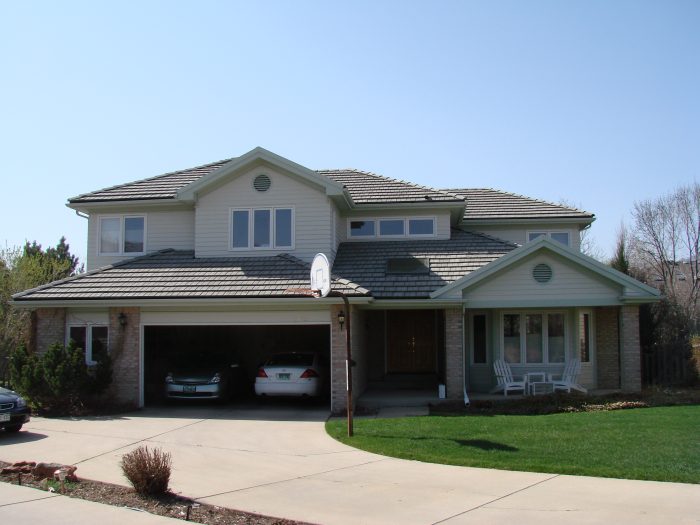
Every other home in this neighborhood had a wood shake roof.
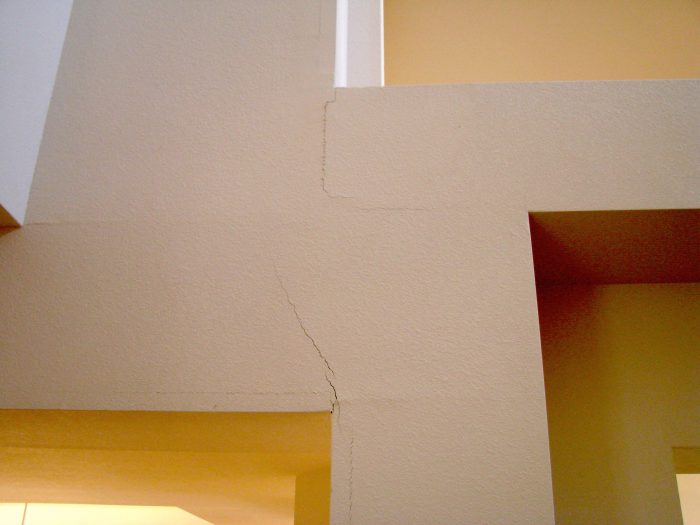
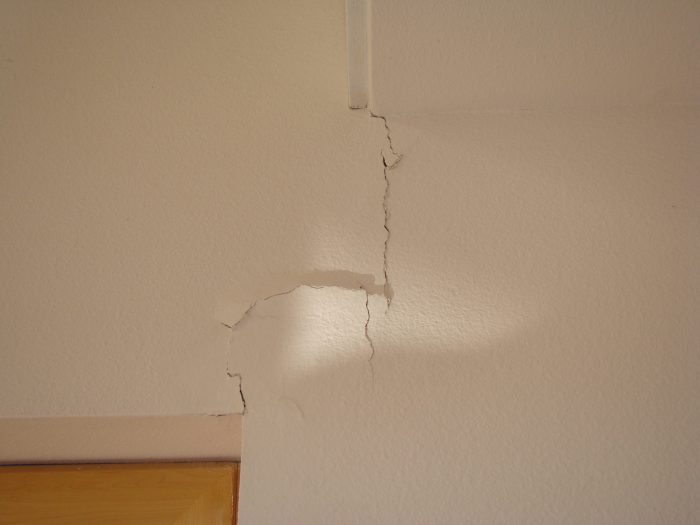
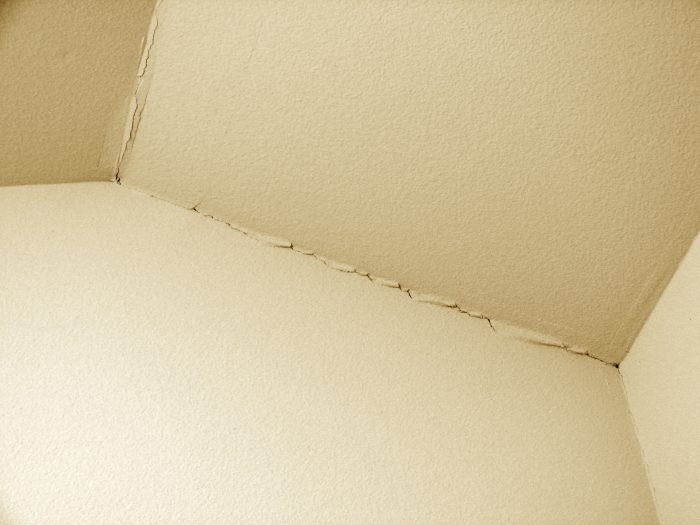

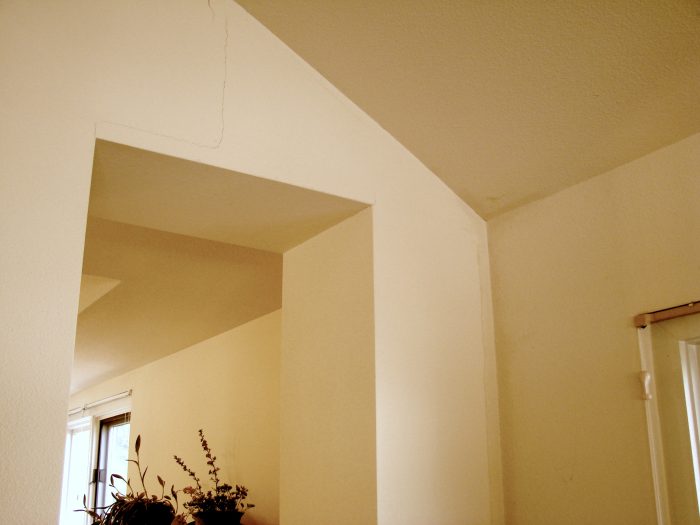
REENTRANT CRACKS

Inside corners: reentrant cracks are the result of high stresses that develop during the curing process that are relieved by cracking.
OUTSIDE CORNER DAMAGE
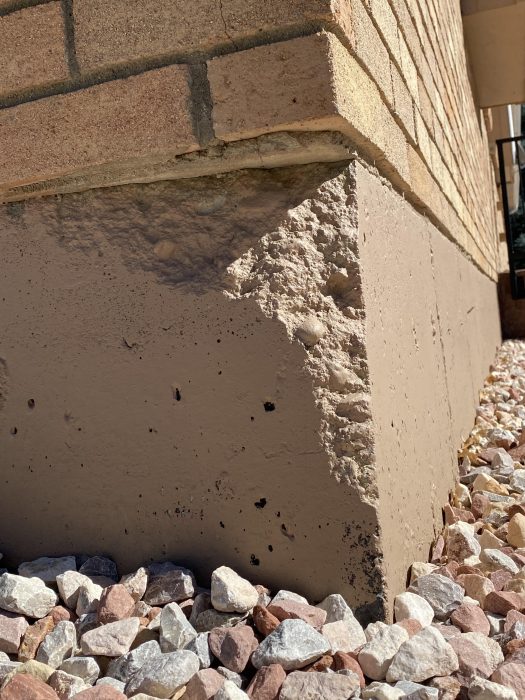
Similar stresses develop in outside corners.
